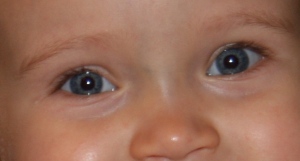Preschoolers are intensively learning rules and testing boundaries. That means yours may gleefully flout your directives and push the limits you impose whenever she gets the chance. And though a preschooler is much more capable of rational thought than a toddler, shes still ruled by her emotions, and can turn on a dime from a happy-go-lucky kid to a flailing, wailing wild thing.
via Time-outs: How to make them work ages 3 to 4 | BabyCenter.
We use time out at our house and usually it gives us all time to calm down. My little granddaughter usually responds to this method of behavior modification.
In fact, I use meditation…deep breathing time-outs when things get particularly hectic during the day.
So my suggestion would be to teach your child or grandchild how to quietly breathe whenever you get a quiet moment with them. My granddaughter shows an interest in yoga whenever she sees me practicing…so seize the opportunity to teach kids whenever you can.
Here is a summary about time-outs from Baby Center.
- What is a time-out? It is not a punishment…but a time to modify a child’s behavior, a time to get control again.
- Time the time out One minute for each year so three minutes for a 3 year olds is what is recommended.
- Make it a specific place for time-outs preferably one without any distractions but where you can observe them
- Be consistent with what a child gets a time out for
- Follow-up with a discussion about the behavior that caused the necessity of a time out.
- Have time-ins for good behavior. Spend extra time with your child and tell him when is doing well.
Time-outs definitely have a place in behavior modification when used effectively within good guidelines they can help a child gain back his control and that is a good thing.
